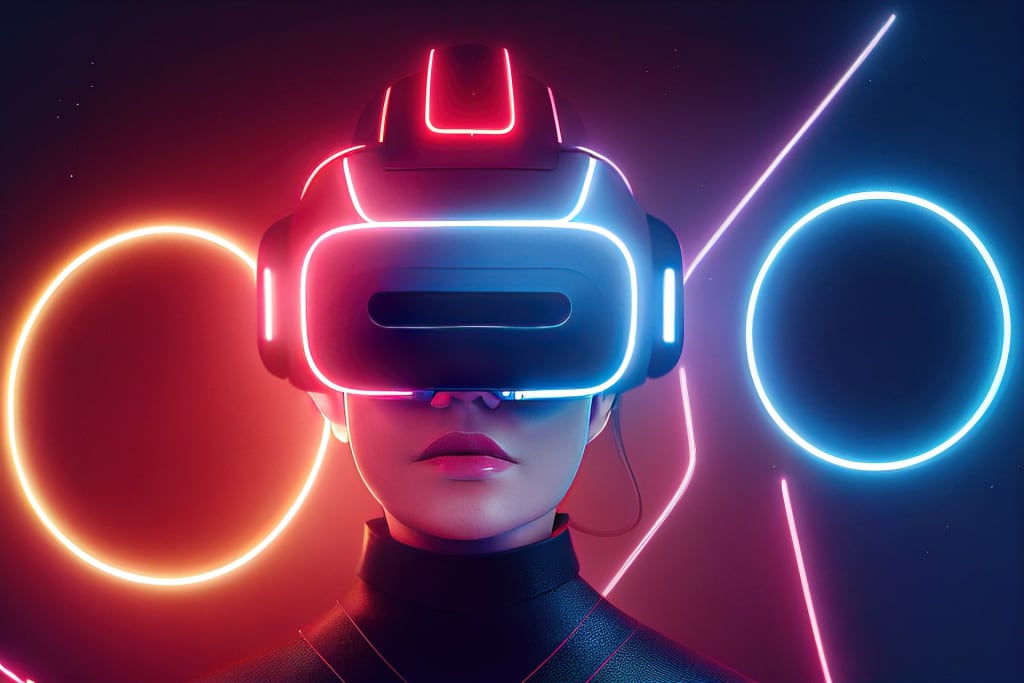Virtual Reality: Changing the Way We Experience Entertainment
Immersive Innovation: Redefining Entertainment through Virtual Reality

Virtual Reality (VR) is revolutionizing the way we experience entertainment, offering immersive and interactive experiences that transcend traditional forms of media. This technology, once considered a futuristic dream, is now a reality that is rapidly transforming various entertainment sectors, from gaming and movies to concerts and theme parks. This article explores the profound impact of VR on the entertainment industry and how it is reshaping our engagement with content.
The Evolution of Virtual Reality
Virtual Reality has evolved significantly since its inception. Early VR systems were bulky, expensive, and limited in functionality. However, advancements in technology have made VR more accessible and sophisticated. Modern VR headsets like the Oculus Rift, HTC Vive, and PlayStation VR offer high-resolution displays, precise motion tracking, and a wide range of interactive experiences.
The journey from rudimentary simulations to today’s advanced VR systems has been marked by continuous innovation. Improvements in graphics processing, motion sensors, and user interface design have contributed to creating more realistic and engaging virtual environments.
VR in Gaming
Gaming has been at the forefront of the VR revolution. VR gaming offers an unparalleled level of immersion, allowing players to step inside virtual worlds and interact with them in ways that were previously unimaginable. Games like "Beat Saber," "Half-Life: Alyx," and "The Walking Dead: Saints & Sinners" have showcased the potential of VR to provide thrilling and immersive experiences.
The appeal of VR gaming lies in its ability to make players feel as if they are truly part of the game world. This level of immersion is achieved through a combination of realistic graphics, spatial audio, and intuitive controls. Players can look around, move, and interact with objects in the virtual environment, creating a sense of presence that traditional gaming cannot match.
VR in Movies and Storytelling
VR is also transforming the way we watch movies and experience storytelling. VR films and experiences allow viewers to become active participants in the narrative, exploring 360-degree environments and interacting with characters and objects. This new form of storytelling creates a deeper emotional connection and a more engaging experience.
Directors and filmmakers are experimenting with VR to push the boundaries of traditional cinema. VR allows for innovative storytelling techniques, such as placing viewers in the perspective of a character or allowing them to explore different narrative paths. This interactivity adds a new dimension to storytelling, making it more dynamic and personalized.
VR Concerts and Live Events
Virtual Reality is redefining live entertainment by enabling virtual concerts and events. With VR, fans can attend concerts, festivals, and sports events from the comfort of their homes while enjoying a front-row experience. Platforms like Wave and NextVR have hosted virtual concerts featuring popular artists, providing an immersive alternative to physical attendance.
The COVID-19 pandemic accelerated the adoption of virtual events as artists and event organizers sought new ways to connect with audiences. VR concerts offer several advantages, including eliminating geographical barriers and providing a more intimate and interactive experience. Fans can enjoy 360-degree views of the stage, interact with other attendees, and even participate in virtual meet-and-greets with performers.
VR in Theme Parks and Attractions
Theme parks and attractions are embracing VR to create more immersive and exciting experiences for visitors. VR rides and attractions combine physical movement with virtual environments, creating a hybrid experience that enhances traditional rides. For example, VR roller coasters use headsets to transport riders to fantastical worlds while they feel the physical sensations of the ride.
VR technology is also used to create entirely new attractions that would be impossible in the real world. For instance, visitors can embark on virtual adventures, such as exploring alien planets or diving into the ocean, all within the confines of a theme park. These experiences push the boundaries of what is possible, providing unforgettable experiences for visitors.
The Impact on Social Interaction
One of the most exciting aspects of VR is its potential to transform social interaction. Social VR platforms like VRChat, Rec Room, and AltspaceVR allow users to interact with each other in virtual environments. These platforms enable people to meet, socialize, and collaborate regardless of physical distance, creating a new form of social connectivity.
In social VR, users create avatars to represent themselves, which they can customize to reflect their personalities. They can then explore virtual worlds, attend events, play games, and engage in conversations with others. This level of interaction creates a sense of community and presence that is difficult to achieve through traditional online communication methods.
Challenges and Considerations
While VR offers exciting possibilities, it also presents several challenges and considerations:
Cost and Accessibility: High-quality VR systems can be expensive, making them less accessible to the general public. However, the cost of VR technology is gradually decreasing, and more affordable options are becoming available.
Motion Sickness: Some users experience motion sickness when using VR, particularly during fast-paced or highly interactive experiences. Developers are working on reducing this issue through improved hardware and software design.
Content Quality: The quality of VR content varies widely. High-quality, engaging experiences require significant investment in development, which can be a barrier for smaller creators.
Physical Space: VR often requires physical space for movement, which can be a limitation for users with limited room. Solutions like stationary VR experiences and more compact setups are being explored.
Health and Safety: Prolonged use of VR can lead to eye strain, fatigue, and other health issues. Users are advised to take regular breaks and follow guidelines to ensure safe usage.
The Future of VR in Entertainment
The future of VR in entertainment looks promising, with continued advancements in technology and increasing adoption by consumers and creators. Here are some trends and developments to watch for:
Improved Hardware: Future VR headsets will likely offer even higher resolution, wider fields of view, and more accurate motion tracking. Advances in wireless technology will also make VR experiences more seamless and convenient.
Expanded Content: As VR technology becomes more accessible, a wider range of content will be developed, catering to diverse interests and preferences. This includes not only games and movies but also educational content, virtual tourism, and wellness applications.
Augmented Reality (AR) Integration: The integration of VR and AR will create mixed-reality experiences that blend virtual and real-world elements. This convergence will open up new possibilities for interactive and immersive entertainment.
Social and Collaborative Experiences: Social VR platforms will continue to evolve, offering more sophisticated ways for users to interact and collaborate. This includes virtual workplaces, educational environments, and creative spaces.
Mainstream Adoption: As VR becomes more affordable and user-friendly, it will likely achieve mainstream adoption. This will drive further innovation and investment in the technology, leading to even more advanced and immersive experiences.
Conclusion
Virtual Reality is undoubtedly changing the way we experience entertainment, offering immersive, interactive, and innovative experiences that go beyond traditional forms of media. From gaming and movies to concerts and theme parks, VR is reshaping our engagement with content and opening up new possibilities for creativity and connection. While challenges remain, the future of VR in entertainment is bright, promising a new era of immersive and transformative experiences for audiences worldwide.
About the Creator
Universal Voice
Hi, I'm Raja. I'm a story & article writer. Exploring ideas, insights & perspectives on a wide range of topics. Join me on this journey of discovery and conversation, as we dive into the topics that shape our world & our lives, SUBSCRIBE.
Enjoyed the story? Support the Creator.
Subscribe for free to receive all their stories in your feed. You could also pledge your support or give them a one-off tip, letting them know you appreciate their work.






Comments
There are no comments for this story
Be the first to respond and start the conversation.